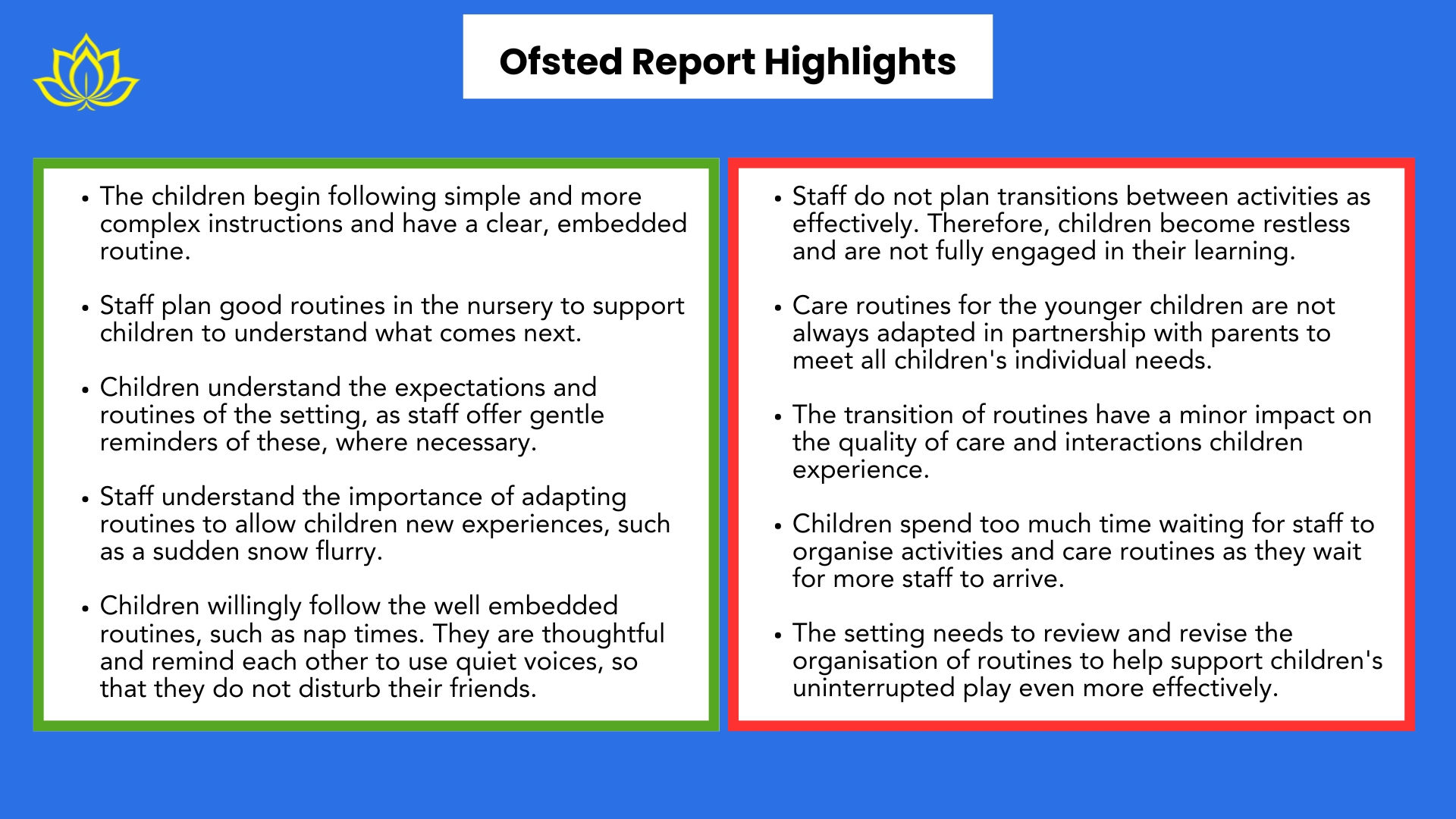A setting with a developmental perspective on routines will…
- Have better flow throughout the day with less waiting points for the children.
- Therefore have less bored children waiting for the next thing, and boredom often leads to poor choices, so there will be less of that.
- Have more time for their children to play, which is where they do all their learning.
When we think of a routine we often think about the key moments in the day, for example: 9am morning registration, 9.30am free play, 10.00am nappy change, 10.30am outside time, 11.30am carpet time, 12.00pm lunch time etc.
Is this how a child thinks though? First of all, they can’t tell the time. If I challenged you to consider what parts of the day are actually fixed by time I think we might be left with meal times and nap times, for those children who nap.
So how can we unpick the rest of the routine more? Let’s start with a couple of examples when it comes to nappy changing…
Example of an effective routine…
What happens:
- The person on the routine for nappy changes quietly approaches a small group and says, “It’s your turn soon, shall we go and get ready?”
- One child is invited at a time, with a calm handover and brief interaction.
- While waiting, other children remain engaged in meaningful play — a sensory basket, a story corner, or short songs led by another practitioner.
- The changing area is warm, welcoming, and calm; staff talk to the child throughout, explaining what they are doing (“I’m going to take off your trousers now… can you lift your legs?”).
- The child is encouraged to help, developing independence and understanding of self-care.
Why it’s effective:
✅ Minimises waiting and boredom.
✅ Builds secure relationships and trust through one-to-one interaction.
✅ Turns a care task into a learning opportunity (language, autonomy, bodily awareness).
✅ Maintains flow for the rest of the group — no unnecessary pauses.
Example of an ineffective routine…
What happens:
- The whole group is lined up near the changing area or made to sit against a wall waiting for their turn.
- One staff member changes children while others try to “keep them busy.”
- Waiting children get restless, bored, or begin misbehaving.
- The environment feels rushed and transactional — minimal communication, no individual attention.
Why it’s ineffective:
🚫 Children spend long periods waiting, losing engagement and patience.
🚫 Boredom often leads to poor behavioural choices.
🚫 Missed opportunities for rich language and connection.
🚫 Feels stressful for staff and children — routine dominates, rather than supports, development.
How could your setting make care routines more meaningful?
Think about:
- How can adults use language, eye contact, and tone to turn each moment into connection?
- Who is waiting, and for how long?
- What can children do during that time that still supports learning or comfort?
What do Ofsted say about this?

Now, watch the presentation below to consider some principles and strategies for refining the routines in your place of work.
Try the GIST – good ideas for starting things…
- Reflect on your routine now and wonder what the children could be doing when not doing the thing that the routine is making them do, now.
- Watch one child for a period of time in the day, perhaps when transitioning into lunch then to nap time. How much time do they spend waiting and playing? Are you comfortable with this experience for your children?
Want to learn more?
- If you are worried about raising any of these issues with colleagues then consider this free course from Edventurous Leadership on Having Difficult Conversations.
- Read this article on how routines can improve behaviour.
- Check out this article focused on care routines.
